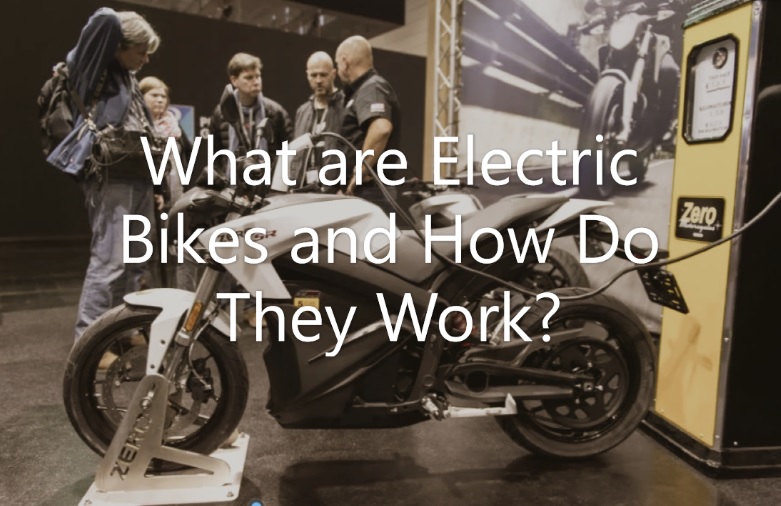What are Electric Bikes and How Do They Work?

Electric bicycles, commonly referred to as e-bikes, represent a rapidly growing sector of the transportation market, heralded for their eco-friendly, efficient, and convenient characteristics. Let’s delve into the details of what electric bikes are and how they function.
Understanding Electric Bikes
An electric bike is a bicycle that is integrated with an electric motor, allowing the rider to either pedal conventionally, rely on the motor completely, or use a mixture of both, depending on the type of e-bike and the rider’s preference. E-bikes can range in their power and function, with some offering minimal assistance, just enough to help with tough hills, and others providing enough power to completely replace manual pedaling.
E-bikes are not to be mistaken for mopeds or motorcycles; they are designed to complement human power, not replace it entirely. In most countries, e-bikes are regulated to ensure they remain within certain speed and power limits. For instance, in the EU and the US, the maximum assisted speed is typically 25 km/h (15.5 mph) and 32 km/h (20 mph), respectively, and the motor’s maximum power is often restricted to 250W or 750W.
Components of an Electric Bike
To understand how electric bikes work, it’s essential to understand their components. In addition to the standard bicycle parts, e-bikes consist of several key electrical components:
- Electric Motor: The electric motor is what provides the extra power when you pedal or initiate the throttle. There are two primary locations for e-bike motors: hub motors, which are located on one of the bike’s wheels, and mid-drive motors, which are positioned in the middle of the bike frame.
- Battery: The battery supplies power to the motor. Most e-bike batteries are lithium-ion and have a range of around 20-100 miles, depending on the bike, battery capacity, and riding conditions. The batteries are rechargeable, usually taking between 2-6 hours for a full charge.
- Controller: The controller is like the e-bike’s brain. It manages the power from the battery to the motor based on the rider’s input from the throttle, pedal sensors, or both.
- Throttle/Pedal Assist: E-bikes typically have one of three types of rider input systems: a throttle, pedal-assist (also known as pedelec), or both. A throttle-only e-bike functions like a motorcycle, where twisting the throttle gives power. Pedal-assist bikes provide power only when the rider is pedaling, and the amount of power is usually adjustable.
How Electric Bikes Work
In simple terms, electric bikes work by adding an electric motor to a traditional bicycle, which is then powered by a rechargeable battery. The controller manages the delivery of power from the battery to the motor.
In the case of throttle-based e-bikes, when the rider engages the throttle, the controller sends power from the battery to the motor, which then propels the bike forward. The level of assistance provided depends on how far the throttle is engaged.
Pedal-assist e-bikes function slightly differently. They use a sensor to detect pedaling activity and, based on the detected pedal speed or force, the controller sends the appropriate power level from the battery to the motor. The power assistance stops once the rider ceases pedaling or when the e-bike reaches a certain speed, typically set by regulatory standards.
The Growth of Electric Bikes
The appeal of electric bikes is increasing globally, leading to a significant surge in their adoption. This growth is fuelled not only by technological advances that have improved the functionality and affordability of e-bikes, but also by a growing societal focus on sustainability and reducing carbon footprints. As cityscapes become more congested and societies more eco-conscious, the electric bike market is poised to keep expanding.
The Evolution of Electric Bike Technology
E-bike technology has dramatically evolved over the years. Early models were often heavy and cumbersome, with limited range and power. Today, thanks to advancements in battery technology and electric motors, e-bikes are lighter, more powerful, and able to travel longer distances on a single charge. Many modern e-bikes also come equipped with sophisticated electronics, such as integrated lights, anti-theft systems, GPS tracking, and even connectivity to smartphone apps for ride data and system diagnostics.
Battery technology, in particular, has played a crucial role in the evolution of e-bikes. Modern lithium-ion batteries are lighter, charge faster, and last longer than their predecessors. They also offer higher energy density, meaning they can store more energy for the same weight, significantly increasing the e-bike’s range.
Safety and Regulation
E-bike safety is a crucial consideration, as they are faster and heavier than traditional bikes. Many e-bikes feature enhanced braking systems to handle the increased speed and weight. Moreover, some e-bikes are equipped with regenerative braking systems, which recharge the battery when the brakes are applied, enhancing the bike’s efficiency.
It’s also essential to mention the regulatory aspect of e-bikes, which varies greatly around the world. Many jurisdictions limit the maximum speed and power of e-bikes and may require them to have pedal-assist rather than throttle-based operation. In many places, e-bikes are legally classified as bicycles rather than motor vehicles, so long as they adhere to certain speed and power limitations. This means they can be ridden in bike lanes and don’t require a driver’s license, insurance, or registration. However, riders should always verify the regulations in their specific area.
Conclusion
In conclusion, e-bikes are an innovative solution that marries traditional bicycling with modern technology. They offer a greener, healthier, and more efficient mode of transportation. Whether you’re a cycling enthusiast seeking to extend your range, a commuter looking for an efficient and eco-friendly way to navigate your city, or someone who just wants to enjoy a more leisurely ride, e-bikes offer a promising and versatile solution.
